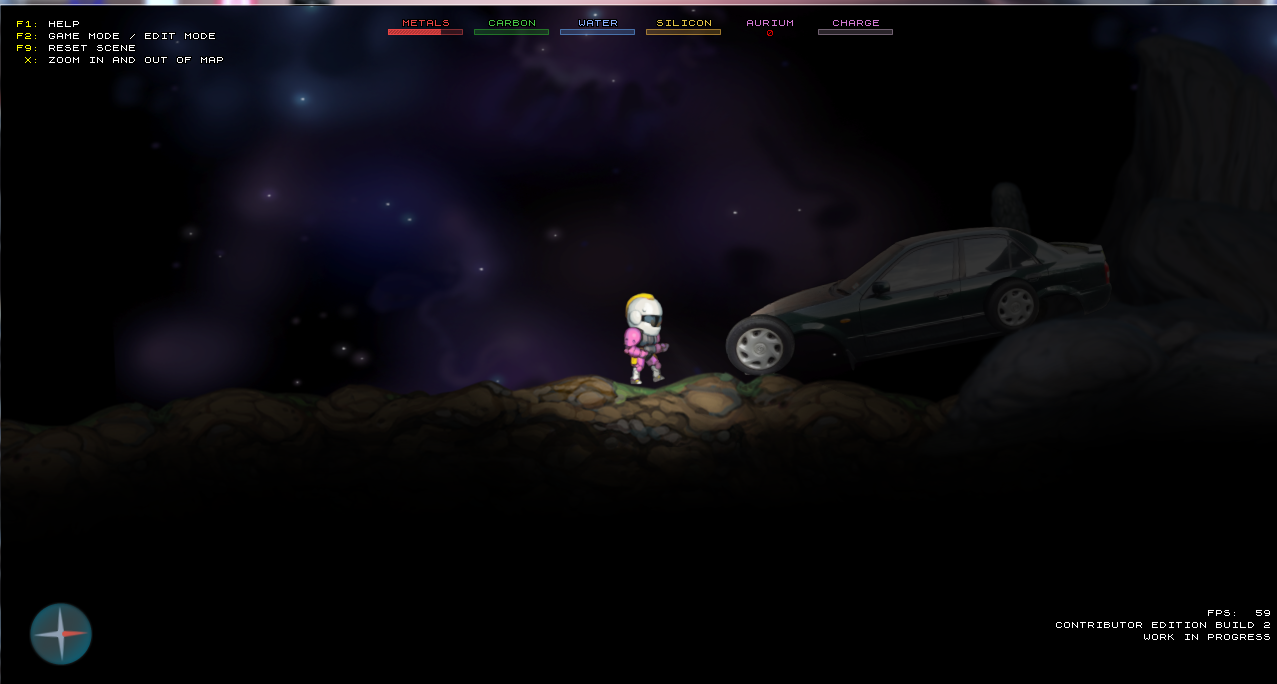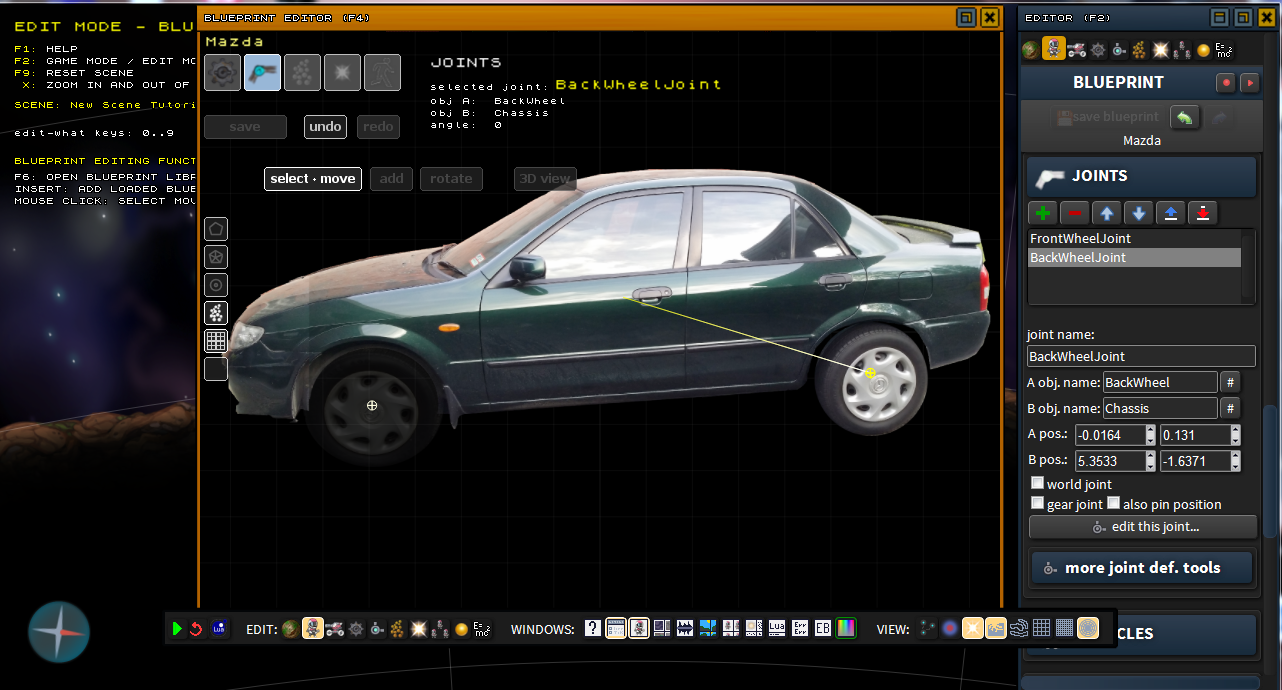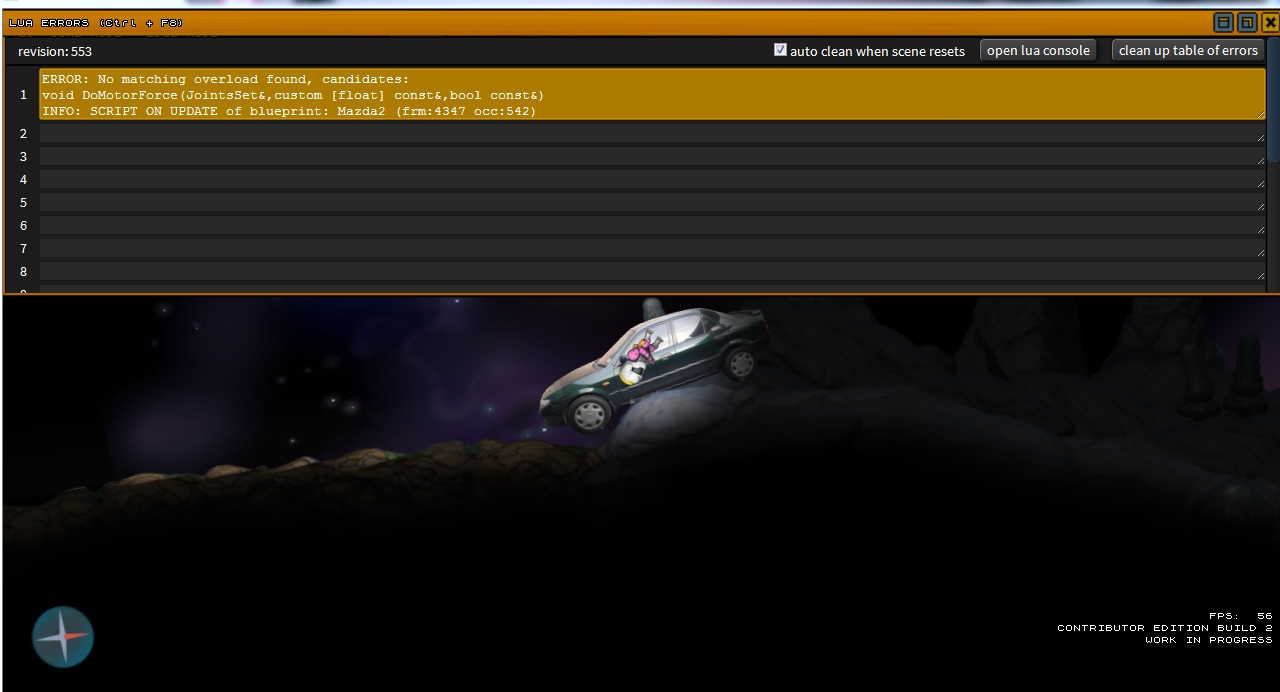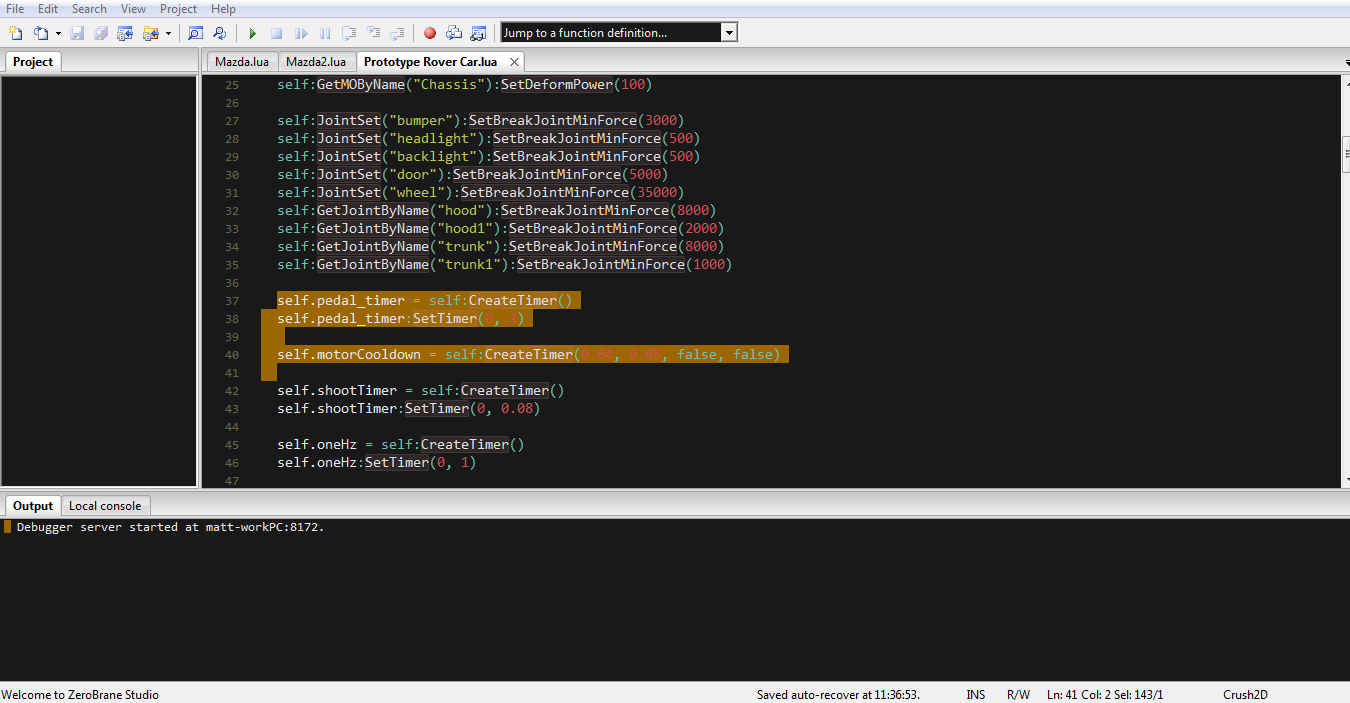I put my car into space sandbox Planetoid Pioneers so I could drive it on the moon
After a few catastrophic experiments, the Mazda 323 Moon Rover is born.

I'm a simple man with simple dreams. To live forever. To dive into my own money pit like Scrooge McDuck. To pull off a sick burnout on the surface of the moon. I'm still working on the first two, but I've had some luck with the last one thanks to Planetoid Pioneers, a physics-based 2D sandbox game currently in Early Access on Steam.
In its current state, Planetoid Pioneers is less of a game and more of a suite of creation tools, encouraging you to build all sorts of wacky contraptions using in-game assets or even your own custom sprites. Bingo. Here was my chance to take my dinky little Mazda 323 and turn it into the Mako from Mass Effect—except with better handling.
First things first: I need to Tron my one-tonne sedan into the Matrix. Or in layman's terms: take some photos of my Mazda and drop them into the game.
Thankfully, the process is a lot easier to do than it is to rhapsodize, even for someone like me with zero artistic skill. I grab a couple of happy snaps with my phone's camera and throw them into GIMP, a free alternative to Photoshop. A half-hour of amateur cropping work later, and I have a PNG of my crummy green Mazda ready to go. I simply drag and drop the image into Planetoid Pioneers' editor, and I'm good to go. Well, almost.

I guess I should probably add some wheels to this thing. Another trip back to GIMP produces two totally-not-misshapen wheels I paste into place beneath the chassis. Perfect! Who'd have thought making art was this easy?
Nobody with half a brain, clearly. The second I spawn my creation in the game, it all falls apart. The wheels roll away off screen, while the chassis breaks into little chunks of green metal. It seems I should probably have attached the wheels to the chassis somehow first. A minor oversight. Back to the editor!
Deciding that a quick scan of the Help section couldn't hurt, I run my eye over a couple of tutorials discussing everything from joints to motors to particle systems. It's dense stuff, but I think I get the gist of it. Connect objects with joints, and use motors to make them move. How hard can it be?
Keep up to date with the most important stories and the best deals, as picked by the PC Gamer team.

Well, at least the wheels didn't fall off this time—they just won't stay where they're supposed to.
A second plunge into the tutorials reveals that joints can be fixed in place by checking the box marked 'pin position.' I follow the advice and presto! My car no longer sags like a depressed balloon. The only thing is, the wheels don't turn anymore either, which seems like it might be a problem. I can't find a solution in the tutorials, so I load up one of the game's pre-built vehicles and try to reverse-engineer how it was put together. After blundering my way through settings for material composition and breakage thresholds and other systems I don't really understand, I finally find what I'm looking for: angular spring.

Ratcheting this setting up adds tension to my wheel joints, meaning I can uncheck 'pin position' so the wheels spin freely in place while remaining bound beneath the wheel arches. Success! My car can move! Well, so long as it's on an incline. And the ground isn't too bumpy. And my spaceman doesn't stand in its path. It's still a pretty poor excuse for a car.
My next task is to figure out how to actually drive the car, rather than headbutting it from behind and making engine sounds with my mouth. Joints to the rescue again! I slap a mount joint onto the driver's seat, which lets me climb in and at least look like I'm driving. That is, until I press forward and immediately start spinning around and around on the spot, re-enacting Homer Simpson's iconic whoop-whoop-whoop scene. Apparently I'd forgotten to add tension to the joint. I pop back to the editor and up the angular spring value, and boom! I'm a regular space trucker—er, space car-er? Space sedan-er?

Just one last hurdle remains: the engine. It can't be that hard; after all, there's a nice, friendly checkbox labelled 'motor enabled.' All I have to do is check that, and I'll be good to go.
Let's look at this optimistically: technically the wheels were spinning and I was moving, so you could kind of call that driving. I'm not quite so confident anyone could actually survive such a ride, though. Also, I can't stop. If this is any indication of what planetoid pioneering's like, I'm pretty sure the human race is doomed.
Returning to the editor, I try to nut out where I've gone wrong. All my settings look the same as the ones for the built-in vehicles, yet none of them turn into a human blender when I hit the accelerator. Randomly sliding sliders and messing with values gets me nowhere—though I do manage to crash the game at one point—and eventually I realise there's only one option left: I must enter the world of code.

Lucky for me, I'm a programmer, so the Lua script is pretty familiar. Still, I have to hit up the game's GitHub repository and download a few code samples before I fully understand what's going on. It seems I'd forgotten to add friction to my wheels, which was causing them to spin uncontrollably instead of gripping to the ground. That, coupled with the fact I had set my motor to exert a constant force instead of accelerating gradually, meant my wheels were revolving so fast they counteracted gravity itself, creating the nauseating torture device I had shoved my poor planetary pioneer into. A little bit of shameless code-stealing solved that problem, and then it was time to take my tricked-up Mazda for what I hoped would be its ultimate spin.
Mission accomplished! I can now confidently say that I'm the first—and likely last—person to drive a Mazda 323 on a planet other than Earth, even if it's a digital one. There's only one celebration worthy of this achievement.
The Planetoid Pioneers 'Contributor Edition' is currently available for $40. However, the developer advises against buying it unless you want to get your hands dirty with its development. Those who wait for the full release can look forward to "a complete yet expanding action-exploration adventure" built in collaboration with the current community, but for now it's for tinkerers.

